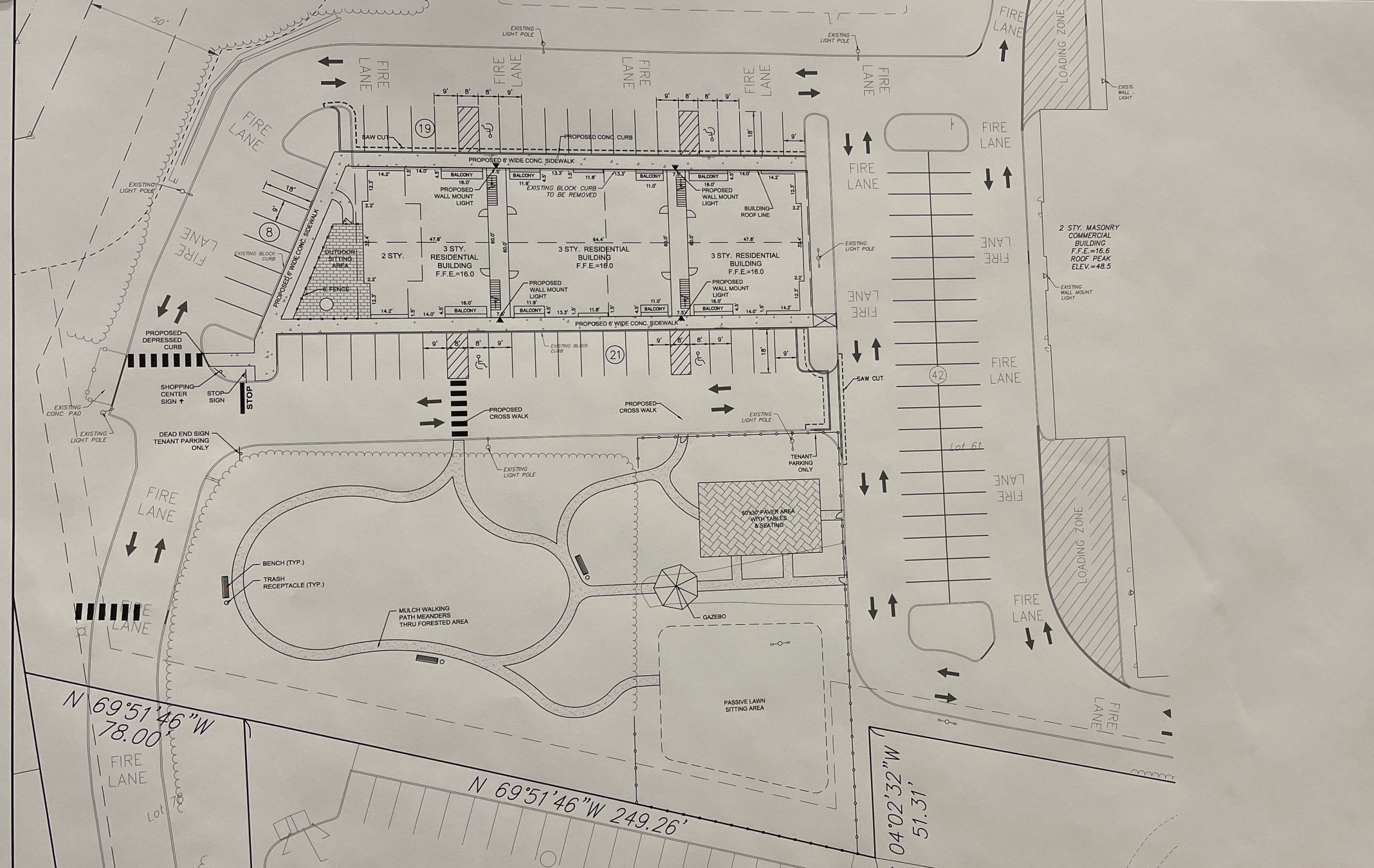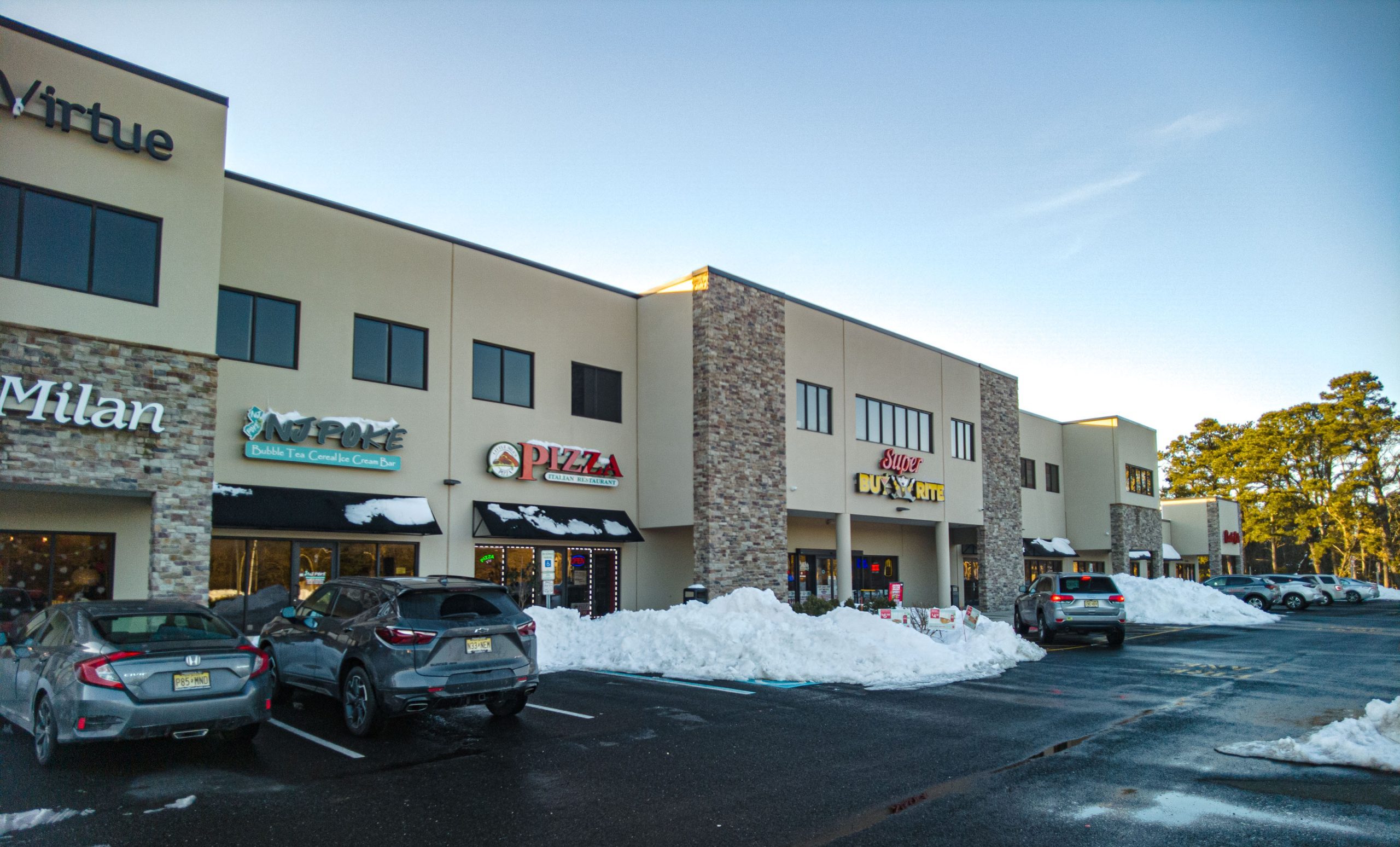A vote on whether to approve 24 new condominium units to a shopping center on Hooper Avenue in the township’s Silverton section was stopped short after a member of the Toms River zoning board cited a conflict mid-hearing and recused herself, delaying the roll call to a future meeting where an alternate member will cast what could be the deciding vote.
The owner of the new shopping center located at 1922 Hooper Avenue, a retail complex that current houses a Buy Rite liquor store, restaurants, a salon and other merchants, is seeking to add 24 condominiums to the rear of the site, which is currently approved for a warehouse use. The project has faced some opposition, though the applicant’s attorney, Joseph D. Coronato, pointed out that those standing in opposition did not live near the proposed expansion.
Under the proposal, the site owner, State Liquors LLC, would build eight one-bedroom units, eight two-bedroom units and eight three-bedroom units at the site. Coronato said since the application was last heard by the board, its designers had added a new path for students to walk to a school bus stop as well as some recreational areas.

A site plan layout for a proposed condominium development at the Buy Rite shopping center in Silverton. (Photo: Daniel Nee)
“Children would be picked up for school on church road,” project engineer Matthew Wilder said, estimating a 630-foot walk, “which is comparable to a dead-end cul-de-sac.”
“The township planner, rightly so, pointed out some multi-family standards,” Wilder told board members, referring to the recreational areas. “We’re not required to add those, since this is a use variance, and we originally did not have those features.”
The recreational area would be located south of the proposed building at the end of a parking lot that terminates in a dead end.
Scott Kennel, a traffic engineer called to testify on behalf of the developer, said the condominiums would generate a small amount of passenger traffic, but less than what would be present at the site if it were developed as a warehouse, which was approved in 2008.
“If this were to be a warehouse, there would be a higher intensity of truck activity,” said Wilder, predicting that for a warehouse of the size that could fit on the property, the traffic would mostly consist of large box trucks.
One board member questioned whether the warehouse use would, indeed, be more intensive.
“With a warehouse, there is some flexibility because they can go to off-peak hours,” said board member Nels Luthman.
Two residents posited vociferous opposition to the application. The first member of the public to speak, Robert Tormollan, said the application “should not even be heard” given its departure from the underlying zoning of the property.
“I do not think this project should even be considered – it does not fit the zoning requirements,” he said. “You can make studies saying whatever you want, ten or thirteen cars coming in and going out, but we all know the reality. It isn’t a residential area.”
Another resident, Arthur Anderson, also spoke out against the proposal.
It was after the public comment portion of the meeting that Dana Tormollan, an alternate member of the board who was hearing the case, announced she would recuse herself from the remainder of the case due to “a comment from the public.”
It was not clear what relationship Tormollan had with Robert Tormollan, who spoke, as well as Cecilia Tormollan, of the same address, who also opposed the application.
Dana Tormollan’s recusal led to a total of just six board members being eligible to vote on the application out of a seven-member board. Because the application for the 24 condominium units requires a use variance, a supermajority of board members must vote in favor of the application for it to pass rather than a simple 5-4 majority. If only six board members can vote, all would have to vote in favor of granting the variance for the development to be allowed.
“I do think since it’s a use variance, and a supermajority is required, I would rather have the seven [votes],” said Coronato.
At the end of the meeting, Coronato made a last-minute proposal to board members to age-restrict the complex to residents ages 45 and above, which would limit the number of school-age children residing there.
“My clients would consider doing that,” he said, saying they believed there is a market for age-restricted housing near the Hooper Avenue business district. “Some people sell their homes in Holiday City where they had a reverse mortgage, let’s say, and this allows them to stay close to their neighbors.”
The board attorney, Melanie Appleby, said she would need to conduct legal research to determine the legality of placing an age restriction on the property of 45 years. Generally, the law provides for age restrictions for developments aimed at those 55 and older to comply with federal housing policies.
“You’re never going to find the most ideal place, wherever you are, but this area is really more hospitable to apartments insomuch as it has more services,” said Coronato. “We’re not into a bait-and-switch here.”
The applicants will return before the board at its April 28 meeting, where it is expected that little more than a closing statement and vote will be heard before a seven-member board has the chance to approve or deny the variance.


Police, Fire & Courts
Lakewood Fire Ruled Accidental; Resident Rescued From Flames by Hero Cop

Police, Fire & Courts
Machete-Wielding Road Rage Suspect Chases Victim to TRPD Headquarters








